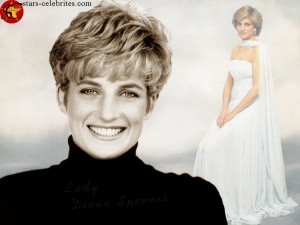Princess Diana
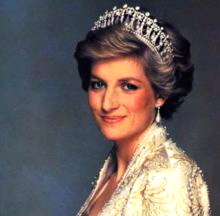
Princess Diana: Panorama Interview 1995 (BBC)
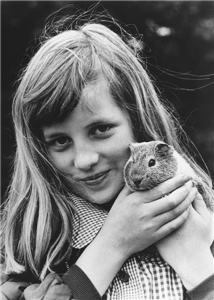 Diana, Princess of Wales (Diana Frances; née Spencer; 1 July 1961 — 31 August 1997), was the first wife of Charles, Prince of Wales, the eldest child and heir apparent of Queen Elizabeth II. Diana was born into an aristocratic English family with royal ancestry as The Honourable Diana Spencer. She was the fourth child of John Spencer, Viscount Althorp, and his first wife, the Honourable Frances Roche, daughter of the 4th Baron Fermoy. Diana became Lady Diana Spencer when her father inherited the title of Earl Spencer in 1975. She became a public figure with the announcement of her engagement. Her wedding to the Prince of Wales on 29 July 1981 was held at St Paul’s Cathedral and seen by a global television audience of over 750 million. While married she bore the titles Princess of Wales, Duchess of Cornwall, Duchess of Rothesay, Countess of Chester and Baroness of Renfrew. The marriage produced two sons, the princes William and Harry, who were respectively second and third in the line of succession to the British throne throughout her lifetime. After her marriage, she undertook a variety of public engagements. She was well known for her fund-raising work for international charities and as an eminent celebrity of the late 20th century. She also received recognition for her charity work and for her support of the International Campaign to Ban Landmines. From 1989, she was the president of Great Ormond Street Hospital for children, in addition to dozens of other charities. Diana remained the object of worldwide media scrutiny during and after her marriage, which ended in divorce on 28 August 1996. If the Prince of Wales had ascended the throne during their marriage, Diana would have become queen consort. Media attention and public mourning were considerable following her death in a car crash in Paris on 31 August 1997. The sudden and unexpected death of an extraordinarily popular royal figure brought statements from senior figures worldwide and many tributes by members of the public. People left public offerings of flowers, candles, cards and personal messages outside Kensington Palace for many months. Her coffin, draped with royal flag, was brought to London from Paris by Prince Charles and her two sisters on 31 August 1997. After being taken to a private mortuary it was put at the Chapel Royal, St. James’s Palace. Diana’s funeral took place in Westminster Abbey on 6 September. The previous day Queen Elizabeth II had paid tribute to her in a live television broadcast. Her sons walked in the funeral procession behind her coffin, along with the Prince of Wales and the Duke of Edinburgh, and with Diana’s brother, Charles Spencer, 9th Earl Spencer. Lord Spencer said of his sister, “She proved in the last year that she needed no royal title to continue to generate her particular brand of magic.”
Diana, Princess of Wales (Diana Frances; née Spencer; 1 July 1961 — 31 August 1997), was the first wife of Charles, Prince of Wales, the eldest child and heir apparent of Queen Elizabeth II. Diana was born into an aristocratic English family with royal ancestry as The Honourable Diana Spencer. She was the fourth child of John Spencer, Viscount Althorp, and his first wife, the Honourable Frances Roche, daughter of the 4th Baron Fermoy. Diana became Lady Diana Spencer when her father inherited the title of Earl Spencer in 1975. She became a public figure with the announcement of her engagement. Her wedding to the Prince of Wales on 29 July 1981 was held at St Paul’s Cathedral and seen by a global television audience of over 750 million. While married she bore the titles Princess of Wales, Duchess of Cornwall, Duchess of Rothesay, Countess of Chester and Baroness of Renfrew. The marriage produced two sons, the princes William and Harry, who were respectively second and third in the line of succession to the British throne throughout her lifetime. After her marriage, she undertook a variety of public engagements. She was well known for her fund-raising work for international charities and as an eminent celebrity of the late 20th century. She also received recognition for her charity work and for her support of the International Campaign to Ban Landmines. From 1989, she was the president of Great Ormond Street Hospital for children, in addition to dozens of other charities. Diana remained the object of worldwide media scrutiny during and after her marriage, which ended in divorce on 28 August 1996. If the Prince of Wales had ascended the throne during their marriage, Diana would have become queen consort. Media attention and public mourning were considerable following her death in a car crash in Paris on 31 August 1997. The sudden and unexpected death of an extraordinarily popular royal figure brought statements from senior figures worldwide and many tributes by members of the public. People left public offerings of flowers, candles, cards and personal messages outside Kensington Palace for many months. Her coffin, draped with royal flag, was brought to London from Paris by Prince Charles and her two sisters on 31 August 1997. After being taken to a private mortuary it was put at the Chapel Royal, St. James’s Palace. Diana’s funeral took place in Westminster Abbey on 6 September. The previous day Queen Elizabeth II had paid tribute to her in a live television broadcast. Her sons walked in the funeral procession behind her coffin, along with the Prince of Wales and the Duke of Edinburgh, and with Diana’s brother, Charles Spencer, 9th Earl Spencer. Lord Spencer said of his sister, “She proved in the last year that she needed no royal title to continue to generate her particular brand of magic.”
 Diana, Princess of Wales: (Diana Frances Mountbatten-Windsor; née Spencer; 1 July 1961 – 31 August 1997)
Diana, Princess of Wales: (Diana Frances Mountbatten-Windsor; née Spencer; 1 July 1961 – 31 August 1997)
Princess Diana was an iconic figure of the late 20th Century. During her life she was often said to be the most photographed person, appearing on the cover of People magazine more than anyone else. She epitomised feminine beauty and glamour. At the same time, she was admired for her groundbreaking charity work; in particular her work with AIDS patient,s and supporting the campaign for banning landmines. Married to Prince Charles in 1981, she received the title of “Her Royal Highness Princess Diana of Wales” She is the Mother of Prince William and Prince Harry 2nd and 3rd in line to the throne respectively.
Diana was born to an aristocratic family who links to the Royal Family. Her father was Edward Spencer, Viscount Althorp. Edward Spencer was a direct descendent of Charles II.. Her mother was Frances Viscountess Althorp. Her mother was distantly related with the Queen Mother, and was also of American descent. When Diana was young, her parents divorced with her father winning a bitter battle for custody of the children. Diana grew up in the family home of Park House, before moving to Althorp in 1975. Diana did not shine as a student, but did well in music and ballet. When she met her future husband, Diana was working as a part time assistant in a nursery school in London
In 1981, Diana married Prince Charles. Diana was 13 years the junior, at an age of just 20, Charles by contrast was 33 at the time of the wedding. The general public soon warmed to the innocence and beauty of Princess Diana, and the wedding was watched by over 1 billion people world wide. During their marriage they had two sons, Prince William and Prince Harry. However, in the mid 1980s, strains started to appear in the marriage, and under much publicity the marriage broke up leading to a divorce in 1992. During this period Diana is said to have suffered various health problems such as bulimia and depression.
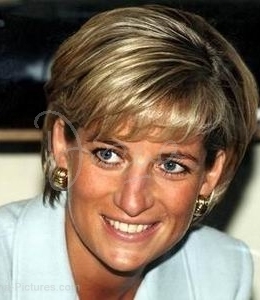 As Princess of Wales, Diana was expected to take part in various official engagements, such as, opening of hospitals. This provided a natural outlet for her to become involved in various types of charitable work. Her natural sympathy and oneness with patients was much admired. In 1987, Princess Diana was one of the first well known celebrities to be photographed with a victim of AIDS. This was important in changing attitudes to the disease. At the time, many thought the disease could be contacted by touch alone. Another of her high profile charities, was her involvement in the campaign to ban landmines. In January 1997, she visited mine fields in Angola to inspect the clearing of landmines. After her death, the Ottawa treaty, was signed banning the use of anti-personnel landmines. Many agree that her support and role in the campaign played an important role in influencing this decision.
As Princess of Wales, Diana was expected to take part in various official engagements, such as, opening of hospitals. This provided a natural outlet for her to become involved in various types of charitable work. Her natural sympathy and oneness with patients was much admired. In 1987, Princess Diana was one of the first well known celebrities to be photographed with a victim of AIDS. This was important in changing attitudes to the disease. At the time, many thought the disease could be contacted by touch alone. Another of her high profile charities, was her involvement in the campaign to ban landmines. In January 1997, she visited mine fields in Angola to inspect the clearing of landmines. After her death, the Ottawa treaty, was signed banning the use of anti-personnel landmines. Many agree that her support and role in the campaign played an important role in influencing this decision.
Shortly before her death, June 18th Princess Diana met with Mother Teresa. Both admired each other. Mother Teresa always said “Diana is my daughter.” With utmost humility Diana said “I am a very, very small Mother Teresa.
Despite the pervasive press intrusions into her private life, Diana remained very popular because people could identify with her. Her hands on approach to charity work gave the impression of a new type of Royal, who was no longer so remote.
“everyone needs to be valued. Everyone has the potential to give something back if only they had the chance.”
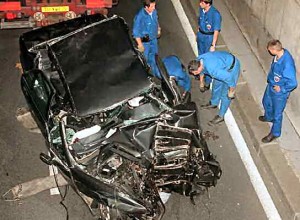 Diana died on 31st August, 1997, in a car crash involving Dodi Al-Fayed. (see last moments of Princess Diana) It was said they were being chased by paparazzi at the time the fatal accident. Although, the inquest noted that the driver was also under the influence of drugs and drink. Controversy still surrounds her death, with a further inquest still underway.(3) The death of Diana had a profound impact on the British public and those in other countries. It led to an unprecedented outpouring of grief and sympathy, for a person people had taken into their hearts. Over 1 million bouquets of flowers were laid at Buckingham Palace. Her funeral was watched by countless millions around the world. Her final resting place was her family home of Althorp.
Diana died on 31st August, 1997, in a car crash involving Dodi Al-Fayed. (see last moments of Princess Diana) It was said they were being chased by paparazzi at the time the fatal accident. Although, the inquest noted that the driver was also under the influence of drugs and drink. Controversy still surrounds her death, with a further inquest still underway.(3) The death of Diana had a profound impact on the British public and those in other countries. It led to an unprecedented outpouring of grief and sympathy, for a person people had taken into their hearts. Over 1 million bouquets of flowers were laid at Buckingham Palace. Her funeral was watched by countless millions around the world. Her final resting place was her family home of Althorp.
Sri. Chinmoy said of Princess Diana
“Princess Diana, your heart of sympathy covers the length and breadth of the world. There shall come a time when the entire world will value you most sincerely, most lovingly and most wholeheartedly.”
http://www.biographyonline.net/people/short-bio-princess-diana.html

